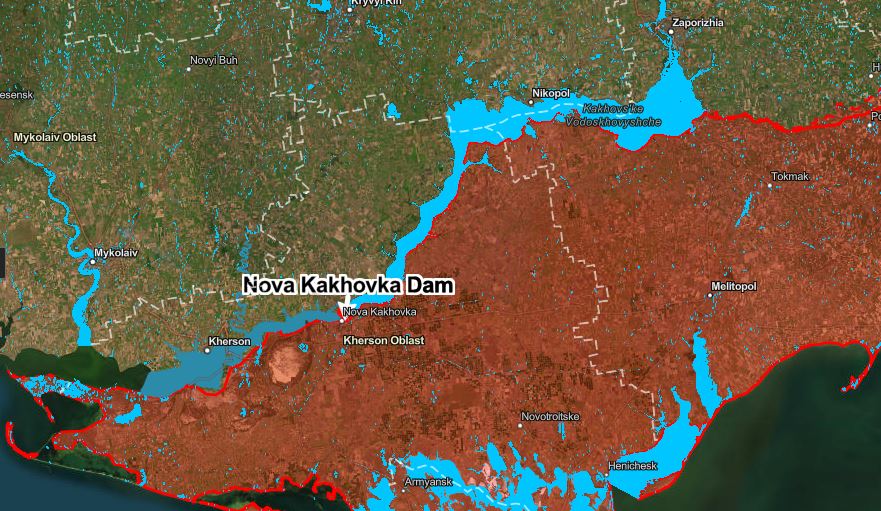The destruction of the Kakhovka Hydroelectric Power Plant (HPP) and the spill of its reservoir will cause severe water supply problems in four Ukrainian oblasts in the near future. The affected areas are the Dnipropetrovsk, Zaporizhzhia, Kherson, and Mykolaiv oblasts. Furthermore, Crimea will not receive any water for at least a year.

Ihor Syrota, the CEO of UkrHydroEnergo, stated in an interview with Radio Svoboda that “The supply of water to Crimea does not take place because the level of water in the Kakhovka reservoir is much lower than required to flow through the Crimean canal. Therefore, most likely, water will not be supplied to Crimea for at least a year.”
Syrota also added that, “We understand that these are the four oblasts that will suffer from water supply problems. Because we know that [when water levels in the Kakhovka reservoir drop] below 12.70 meters (what we call the ‘dead zone’), the intakes do not work.”

The company is currently considering alternative solutions to provide the population with drinking water. Syrota mentioned that,
“At present, there are no problems yet. As far as we know, Kryvyi Rih has reserves for 1.5-2 months. For Nikopol and other cities suffering from flooding, water is being delivered. The Prime Minister has instructed to quickly increase the wells in the Kherson, Mykolaiv, and Dnipro oblasts. First of all, near hospitals, to provide people with drinking water. Where this is not possible, drinking water will be delivered.”
According to Ukrainian official data, 32 settlements were flooded on the Ukrainian-controlled territory of Kherson Oblast and 14 on the Russian-occupied part. 2,699 people have been evacuated, at least five were killed, and 29 are missing. In the neighboring Mykolaiv Oblast, 31 settlements were flooded, and 982 people were evacuated.
18 cubic kilometers of water gushed out of the dam of the destroyed Kakhovka Hydropower Plant when a blast breached it on the night of 6 June, flooding the towns in the delta of the Dnipro.
Ukraine accuses Russia of blowing up the dam from within, a statement supported by seismic stations registering the explosion, earwitnesses hearing it, Russian soldiers telling about it, and engineers telling it is the only possible way to destroy such a sturdy construction.
Related:
- Earwitnesses recall hearing explosions on night when Nova Kakhovka dam collapsed
- Seismic signals indicate Kakhovka dam explosion – NORSAR
- Russian sabotage group blew up Kakhovka dam; it didn’t go as planned, SBU intercept alleges
- Kakhovka Dam was built to withstand nuclear strike, couldn’t be destroyed from outside – Ukrhydroproject engineering company
- Kakhovka dam breach: Hundreds of Ukrainians drown as Russia prevents evacuation, seals off flooded towns






